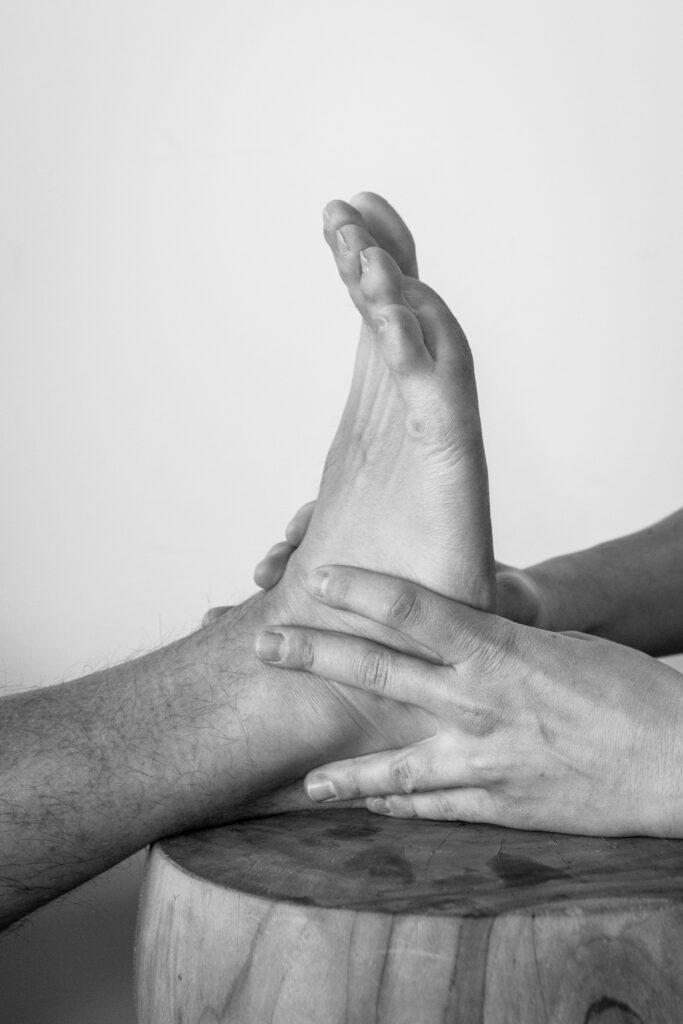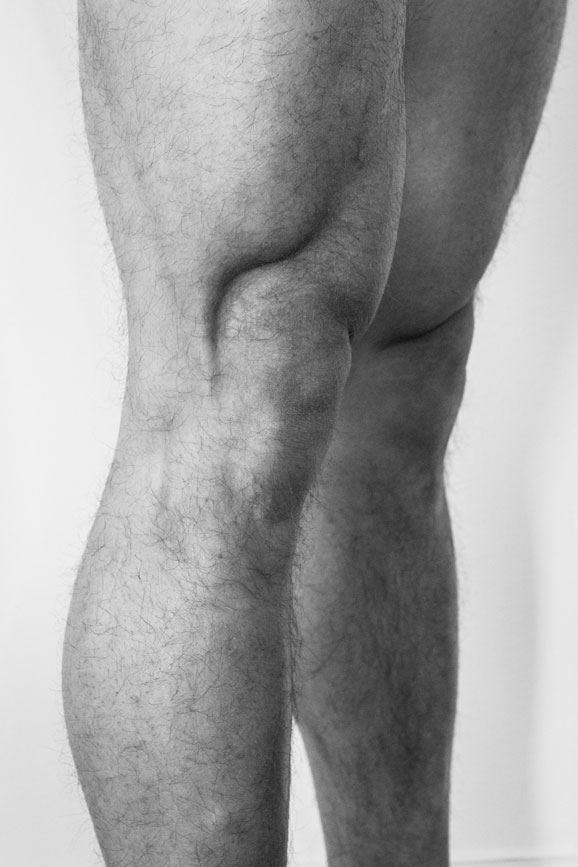People don’t realise the importance of their feet until their ability to walk or move becomes impacted.
Lets face it, any uncertainty surrounding a diagnosis from your doctor can be a scary thought. The fear amounts in the form of the unknowing and from here all sorts of questions start to arise. Questions asking yourself about the severity of the condition or whether or not this new diagnosis will impact on your quality of living. The ‘how, when & why’ start to build up and you feel like you have more questions than answers.
For many diabetics this is an ongoing battle.
To understand how Diabetic Foot Disorders come about lets first delve a little more into the condition itself.
What is Diabetes?
Diabetes is a chronic medical condition that affects the body’s ability to process blood sugar. It can lead to serious long-term health problems if not managed properly. Type 2 diabetes is a form of diabetes that occurs when the body becomes resistant to insulin. People with type 2 diabetes are susceptible to several diabetic foot problems and often need to keep a close check on their foot health from time to time. In this article, we will discuss the importance of understanding type 2 diabetes related foot problems and the role of podiatrists in their prevention, assessment and treatment.
How Does Diabetes Affect Your Feet?
Diabetic foot problems occur as a result of nerve damage or lack of blood flow to the feet due to high levels of blood sugar in the body. This can cause 2 major issues:
1. Diabetic Neuropathy
Diabetic neuropathy is a condition caused by nerve damage as a result of uncontrolled diabetes. Diabetic neuropathy, can affect various parts of the body, including the feet. Diabetes nerve damage can result in a loss of feeling in the feet, making it difficult for people with diabetes to detect injuries or wounds. In some cases, the nerves can also become hypersensitive, causing pain or a burning sensation in the feet. These symptoms can make it challenging to maintain an active lifestyle and carry out daily activities.
2. Peripheral Vascular Disease
Diabetes can also hamper blood flow in the limbs causing infections, cuts & sores to take longer than usual to heal. This can increase your risk of other diabetic foot problems like ulcers or gangrene that if left undetected can have severe complications on your health.
How are Diabetes Foot Problems Diagnosed?
Nerve Testing
It is well known that signal loss and nerve damage can occur with poor control of high glucose levels. Well if you picture how far away the brain is to the foot it becomes easier to understand how these lost signals would have a harder time getting down to the level of the feet. The disconnect between brain, muscle and nerves has a significant impact on the receptors around the foot; when these receptors aren’t able to detect feeling it becomes an issue where the individual will have loss of protective sensation (refers to feeling or sensation that protects from hot, cold & sharp).
Podiatrists will utilise their training to assess the severity of any reduction in sensation loss or feeling loss. Monofilament devices, vibration devices and sharp/blunt devices are used to determine if an individual is at risk of peripheral neuropathy (refers to total loss of feeling). The difference between having adequate feeling as opposed to no feeling will determine the individual’s risk level of protecting themselves from sharp, hot and cold.
Blood Flow Testing
The heart and brain follow a similar pattern. If the distance between the brain and feet are risk factors that can cause sensation loss; the distance between the heart and feet can be a predisposing factor to a reduction in circulation and blood flow. Generally the arteries would bring the blood away from the heart and to the rest of the body. If an individual has poor cardiovascular history (blood pressure, cholesterol, vessel thickening) the smooth flow of blood to the feet can be affected. If blood flow slows down the healing ability of the individual is reduced; a reduction in healing would mean a higher risk of infection.
To help manage this; podiatrists will usually look for the signs and symptoms that may warrant blood flow loss. If this happens to be the case ultrasound machines, blood pressure and oxygen machines are used to determine its severity. Footwear modification and special diabetic orthotics can be used to offload weight and pressure from areas that may be at risk of developing a non-healing ulceration. Prevention of non-healing wounds at this stage is critical.
What Are Some Common Diabetic Foot Problems?
There are several diabetic foot problems that people with type 2 diabetes feet need to watch out for. While these can affect anyone, it’s especially important for people with diabetes to seek medical help the moment symptoms arise to prevent further infection. These include:
- Ulcers on feet – Ulcers are open sores and are a common complication of diabetes. They can be slow to heal and may even become infected if not treated promptly, leading to more severe complications such as cellulitis, bone infections, or even amputation.
- Athlete’s Foot – a fungal infection that can often cause redness, itching and cracking of the skin on your foot.
- Fungal infection in the nails – Fungus that develops on your nails as a result of diabetes, cuts, or injury can cause the nails to turn yellowish, brown and brittle and seperate from the rest of your nail.
- Ingrown toenails – Ingrown toenails occur when the edge of the toenail grows into the skin causing pain along the toe edge. Sometimes, ingrown toenails can puncture the skin causing redness, swelling and infection. Ingrown toenails are most commonly caused by pressure from the shoe or improper nail grooming.
- Calluses – Calluses are tough built up skin that usually forms on the underside of the foot as a result of uneven weight distribution, improper footwear or skin issue. While calluses are normal for some, for people with type 2 diabetes feet, it’s important to seek medical help to find out if they are a cause for concern.
- Plantar warts – Plantar warts may look like calluses but with a pinhole or tiny black spots in the center. Unlike callouses, they are caused by a virus that attacks the skin on the sole of the feet. They are often more painful and for people with diabetes, cause infection if left untreated.
- Blisters, cuts or sores – These are causes mostly due to friction or rubbing of footwear on the feet and for people with type 2 diabetes can cause infection.
Importance of Foot Care for People With Type 2 Diabetes
It is crucial for individuals with type 2 diabetes feet to understand the importance of foot care and regular check-ups with a podiatrist. By maintaining good foot care and seeking prompt treatment for any foot problems, people with type 2 diabetes can reduce the risk of complications and ensure optimal foot health. Read on to learn some foot care tips to protect your feet from diabetes related infections.
Diabetic Foot Care – 10 Tips To Take Care Of Your Feet
- Check your feet daily – Take 5-10 minutes every day to inspect your feet for signs of ulcers, blisters, cuts or sores. Especially if you have been diagnosed with poor blood flow, it’s essential to report any skin related problems to your podiatrist at the earliest.
- Wear comfortable footwear – Foot problems like calluses, blisters and corns are often caused by ill-fitting footwear and therefore care should be taken to ensure your shoes fit well and feel comfortable at all times, especially if you run or workout regularly. Speak to your doctor or podiatrist on how to choose the best running shoes for you to set you up for success.
- Wear socks with shoes – Wearing socks on stockings can help protect your feet from blisters or sores and also stepping on objects that can hurt your feet. Its best to give your feet the extra layer of protection especially if you have been diagnosed with type 2 diabetes.
- Wash your feet daily – Ensure to wash your feet with warm water and mild soap regularly and dry them completely before you wear footwear. Do not soak your feet in water especially if you have diabetes nerve damage.
- Trim your toenails regularly – Trimming your toenails regularly can help prevent nail infections and ingrown toenails.
- Be gentle when smoothing calluses and corns – It is recommended to smooth calluses and corns with a pumice stone especially right after your shower when your skin is still soft.
- Keep your feet shielded from hot and cold temperatures – especially if you suffer from loss of sensation, it’s best to protect your feet with socks or footwear to prevent injuries caused by extreme temperatures.
- Move your feet often to keep blood flowing – Wiggle your toes, move your ankles and keep your feet moving from time to time keep blood flowing to your legs.
- Keep your diabetes in check – Work with your doctor and nutritionist to help you regulate your blood sugar levels and keep your diabetes in check. The more your diabetes is under control the less likely you are to develop complications from diabetic foot problems.
- Schedule regular checkups with a podiatrist for diabetes – Even if you don’t have any symptoms of diabetic foot problems, its recommended to see a podiatrist atleast once a month for a thorough foot assessment.
Role of Podiatrists in Prevention & Treatment of Diabetes
Podiatrists play a crucial role in the management of diabetic foot problems. They are specially trained to diagnose and treat a wide range of foot conditions, including those associated with diabetes. Regular check-ups with a podiatrist for diabetes are an essential part of diabetes management, as they can help detect potential problems early and prevent serious complications from developing.
In addition to preventive care, podiatrists can also provide treatment for diabetes-related foot problems. They can help manage diabetes nerve damage and ulcers on feet, as well as other conditions like fungal infections and ingrown toenails. By working closely with other healthcare providers, podiatrists can help develop a comprehensive treatment plan that addresses all aspects of diabetes care.
In Conclusion
People with type 2 diabetes are at increased risk of developing diabetic foot problems due to nerve damage caused by high blood sugar levels. However, with regular check-ups and proper foot care, many of these problems can be prevented or effectively managed. Podiatrists are an important part of the healthcare team for people with type 2 diabetes, as they can help prevent, diagnose, and treat foot problems associated with diabetes.
At Pro-Form Physio, our experienced and skilled podiatrists can help assess and treat any foot problems related to diabetes, helping you maintain optimal foot health and mobility. It is important to remember that taking care of your feet is an important part of managing your diabetes and maintaining your overall health.
Book an appointment with us to find out more!
- Written By Josh Robinson (Physiotherapist)
- Last Updated On 23 Aug 2023





